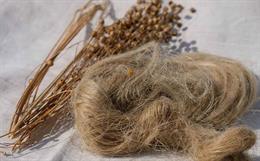India’s handloom sector, a vital part of its rich cultural heritage, is at a crossroads. With the global market increasingly leaning towards India's technical textiles, which are expected to grow at a rate of 10 per cent, and its placement as the 5th largest technical textiles market in the world, there is a unique opportunity to merge traditional craftsmanship with modern innovation. Rachna Shah, Secretary of the Ministry of Textiles, Government of India, highlighted this potential while addressing the Advancements in Composites, Speciality Fibres and Chemicals in New Delhi on May 9, 2024. This integration can revitalise the handloom industry, ensuring its sustainability and enhancing its global competitiveness.
Understanding Technical Textiles
Technical textiles are materials designed for their functional properties rather than aesthetic ones. They are used across various industries including infrastructure development, aerospace, automotive, military and defence, medical devices, composite materials, and sports. These textiles offer benefits such as enhanced durability, water resistance, thermal insulation, and improved mechanical properties. Examples include geotextiles for civil engineering, agro textiles for agriculture, and medical textiles for healthcare.
The Synergy between Handloom and Technical Textiles
1. Innovation in Fabric Production
Handloom weaving is traditionally associated with natural fibres like cotton, silk, and wool. Integrating technical textiles into this sector can introduce new materials such as high-performance fibres, which can be blended with traditional ones. For example, incorporating fibres like Kevlar or carbon into handloom fabrics can create textiles with enhanced strength and durability while sustaining the cultural aesthetics of handwoven designs.
2. Enhanced Product Offerings
Technical textiles can diversify the product range of handloom weavers. Handloom products can be developed for niche markets such as protective clothing, which requires flame retardant or high-visibility properties, or for medical use, where antibacterial and hypoallergenic textiles are in demand. This not only opens new revenue streams but also elevates the perceived value of handloom products on a global scale.
3. Improved Working Conditions and Tools
Technical textiles can be utilised to improve the working conditions of weavers. For instance, ergonomic seating and work surfaces made from technical textiles can enhance comfort and reduce health issues among weavers. Additionally, advanced materials can be used to develop more efficient and user-friendly looms and tools, increasing productivity without compromising the traditional weaving process.
Economic and Social Impact
1. Job Creation and Skill Development
The fusion of technical textiles with the handloom sector can create new job opportunities and spur skill development. Weavers can be trained in handling new materials and techniques, fostering a skilled workforce capable of innovating within the industry. This can attract younger generations to the handloom sector, ensuring its continuity and evolution.
2. Empowerment of Rural Communities
Many handloom weavers are based in rural areas. Integrating technical textiles can boost the local economy by creating new business opportunities and reducing migration to urban centres. The enhanced profitability of handloom products can lead to better wages and improved living standards for weavers and their families.
3. Sustainability and Environmental Benefits
Technical textiles can contribute to more sustainable handloom practices. The use of eco-friendly fibres and biodegradable materials can reduce the environmental footprint of textile production. Additionally, technical textiles can improve the durability of handloom products, leading to longer-lasting items and less waste.
Challenges and the Way Forward
While the potential is significant, integrating technical textiles into the handloom sector poses several challenges. These include the high cost of advanced raw materials and investment risk, the need for specialised training due to lack of technical knowledge and adapting to modern techniques, and potential resistance from traditional weavers on cultural attachment, fear of change and community dynamics. To address these challenges, a multi-faceted approach is required:
Government Support and Policy Frameworks: Government initiatives and subsidies can lower the cost barrier and encourage weavers to adopt new technologies. Policies promoting research and development in technical textiles can also foster innovation.
Collaborations and Partnerships: Partnerships between technical textile manufacturers, handloom weavers, and academic institutions can facilitate knowledge transfer and the development of new products.
Awareness and Education: Raising awareness about the benefits of technical textiles and providing education and training programmes for weavers can ease the transition and promote acceptance.
Community Engagement: Convincing an entire community to adopt new materials and methods can be a complex and sensitive process. Hence, engaging weavers in the decision-making process and demonstrating the benefits of technical textiles through pilot projects can help mitigate resistance. Highlighting success stories and potential market opportunities can foster a positive attitude towards change.
Gradual Integration: Introducing technical textiles gradually, alongside traditional products, can help ease the transition and allow weavers to adapt at their own pace.
Conclusion
The integration of technical textiles into India’s handloom sector presents a transformative opportunity. By blending traditional craftsmanship with modern technological advancements, the handloom industry can enhance its product offerings, improve economic prospects for weavers, improve employability and contribute to sustainable development. With strategic support and a collaborative approach, the handloom sector can not only preserve its rich heritage but also carve out a significant niche in the global market for technical textiles.
- https://pib.gov.in/PressReleseDetail.aspx?PRID=2020101
- https://kpmg.com/in/en/home/insights/2023/03/india-2047-vision-and-strategic-roadmap-for-technical-textiles.html
- https://www.technicaltextile.net/news/nttm-aims-to-expand-india-s-technical-textile-market-to-50-bn-by-2024-285706.html
- https://handloom.odisha.gov.in/sites/default/files/2022-12/ODISHA%20APPAREL%20AND%20TECHNICAL%20TEXTILES%20POLICY%20-2022_0.pdf

_Big.jpg)





